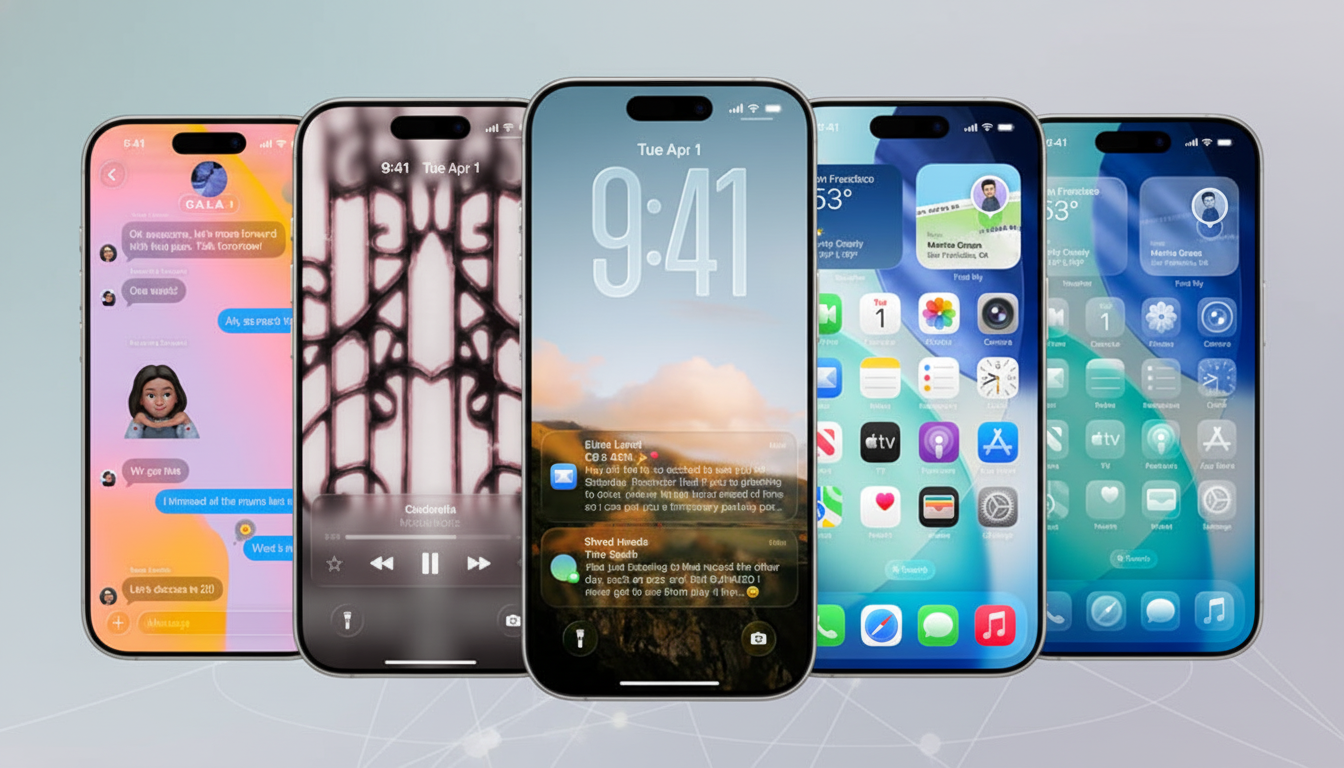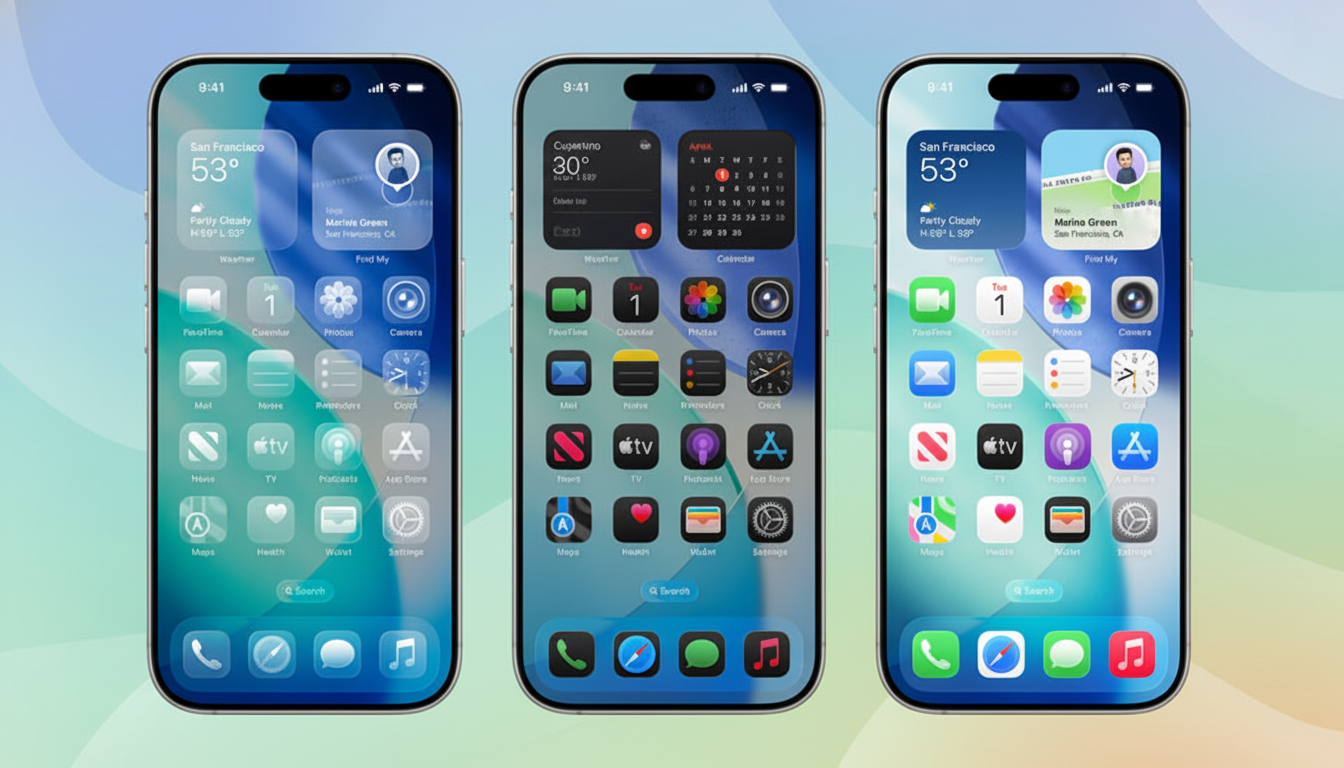Apple’s iOS 26 is the most radical visual overhaul to the iPhone in years and it’s provoking strong reactions. The update brings glassy, translucent design that truly pops, the sort of redesign we want in an iOS release. New communication features take center stage thanks to Apple Intelligence and there are big app refreshes here too. But early adopters are also experiencing battery hiccups and limited control over the fresh look. If you’re on the fence about whether or not to install it, here’s what the experts say: A clear view of the good and bad of this big-hearted descendant before you tap Install.
What’s New in iOS 26: Live Translation and Key Updates
And the marquee feature is live, two-way translation within calls and Messages. Two speakers, speaking two different languages, are engaged in conversation with almost real-time transcription and translation — a distinctly more useful scenario for international travel, global teams or multilingual families. There might be a bit of a pause as the translations render, but not inconveniently extreme, and in return you will have thoughtful comprehension where before there was none. Apple says Apple Intelligence gives priority to on-device processing where feasible, with sensitive tasks going over its privacy-preserving cloud systems.
- What’s New in iOS 26: Live Translation and Key Updates
- Liquid Glass design brings a bold, layered UI overhaul
- Performance and battery life after the iOS 26 update
- Photos and core app changes that simplify daily use
- Security patches and app compatibility considerations
- Who should upgrade to iOS 26 right now and why
- Who should wait for point releases before upgrading
- Bottom line: weighing iOS 26’s pros and cons today

Messages is equally topped up with quality-of-life upgrades — quick-poll tools that make it easier to come to fast decisions in group discussions, and personalized chat backgrounds that give expressive flourish without converting conversations into chaos. “Those are relatively minor changes, but they make it easier for groups to decide on dinner plans, trip details and work assignments.”
Liquid Glass design brings a bold, layered UI overhaul
iOS 26 debuts a new Liquid Glass design language that layers transparency, depth and fluid animations throughout the UI. App chrome, widgets and panels interact as light moves through glass. The end result is a holistic, modern UI, where little bits of joy abound – camera mode labels refract as you swipe; overlapping elements animate more fluidly; lock screens beg to be tweaked more subtly.
The catch: you can’t completely go back to the old look. Accessibility toggles like Reduce Motion and Reduce Transparency help, and there’s a “tinted glass” option in currently available betas for even more control — but the broad visual direction persists. If you’re a fan of stark interfaces, high contrast or older hardware that is already nearing its limits for performance, the increased translucency and animations might seem busy rather than pleasing.
Performance and battery life after the iOS 26 update
Reports from early users note battery drain following the update. As Apple Support points out, with previous versions of the operating system at least, major updates can sometimes kick off background reindexing and photo analysis that should be more or less done after 24–72 hours. Practical steps:
- Update all apps.
- Restart the device in case it fails after installation.
- Check your Battery settings to find any errant apps.
- Try Low Power Mode or the new Adaptive Power setting if available on your model.
- Call Apple if the drain continues for more than a couple of days.
Stability is good for most, though overly cautious iPhone and iPad users will probably want to hold out for iOS 26.3 or iOS 26.4. Point releases bring frequent bug-fix updates, and new features are added continually to the OS (some options have little documentation). Generally, enterprises will wait for that first maintenance release — and if your phone is a mission-critical tool, you may want to do the same.
Photos and core app changes that simplify daily use
Photos is finally simplified properly. The app now breaks into two tidy tabs: Library and Collections, allowing you to more quickly get to everything on your device or dig into albums without having to fish through looming nested views. It’s another small structural change that pays daily dividends, particularly for users who maintain large libraries or manage shared albums.

Systemwide polish finds its way to the camera controls and widget interactions. The overall impression is that everyday actions require you to press fewer taps and receive clearer visual feedback, little changes that can really add up when you’re using the interface hundreds of times a day.
Security patches and app compatibility considerations
And aside from features, each big iOS update includes important security patches. Apple’s security notes for new releases often provide information about a spectrum of vulnerabilities patched throughout the kernel, WebKit and core frameworks. Cybersecurity agencies like CISA encourage the timely patching of mobile devices, as unpatched vulnerabilities are a primary way attackers compromise victims. If you deal with sensitive work data or personal information, waiting on upgrades can also increase exposure.
Compatibility is trending up: popular apps update quickly to new APIs. But consult developer notes for banking, VPN, MDM (mobile device management), accessibility or pro camera apps that are crucial to your workflow. Some companies require internal testing before employees upgrade; it’s a smart practice for freelancers and smaller teams, too.
Who should upgrade to iOS 26 right now and why
If you routinely communicate across languages, the live translation alone might be a reason to swap. Everyone waiting for the forever-delayed Photos refresh, new Messages features and updated security patch will be glad to have them right away. Customers with more recent devices are likely to appreciate Liquid Glass’s visual perks without any performance compromise.
Who should wait for point releases before upgrading
Wait if your battery situation is already desperate, you depend on niche or enterprise apps that need updates and if you’re sensitive to transparency and motion effects, desire more granular control than what iOS 26 currently offers. Waiting for the initial or second point release quite often results in better stability and more toggles to appease the new look.
Bottom line: weighing iOS 26’s pros and cons today
iOS 26 brings a bold look, smarter sharing, and a less cluttered Photos app — but against early battery roulette and scant opt-outs for the new design. If enhanced security and modern convenience are priority one for you, a simple post-install tune-up will do the trick. If predictability and total control of UI behavior are of more importance to you, I would just give Apple a version or two to round away the sharp edges of the UI design and switch over.

